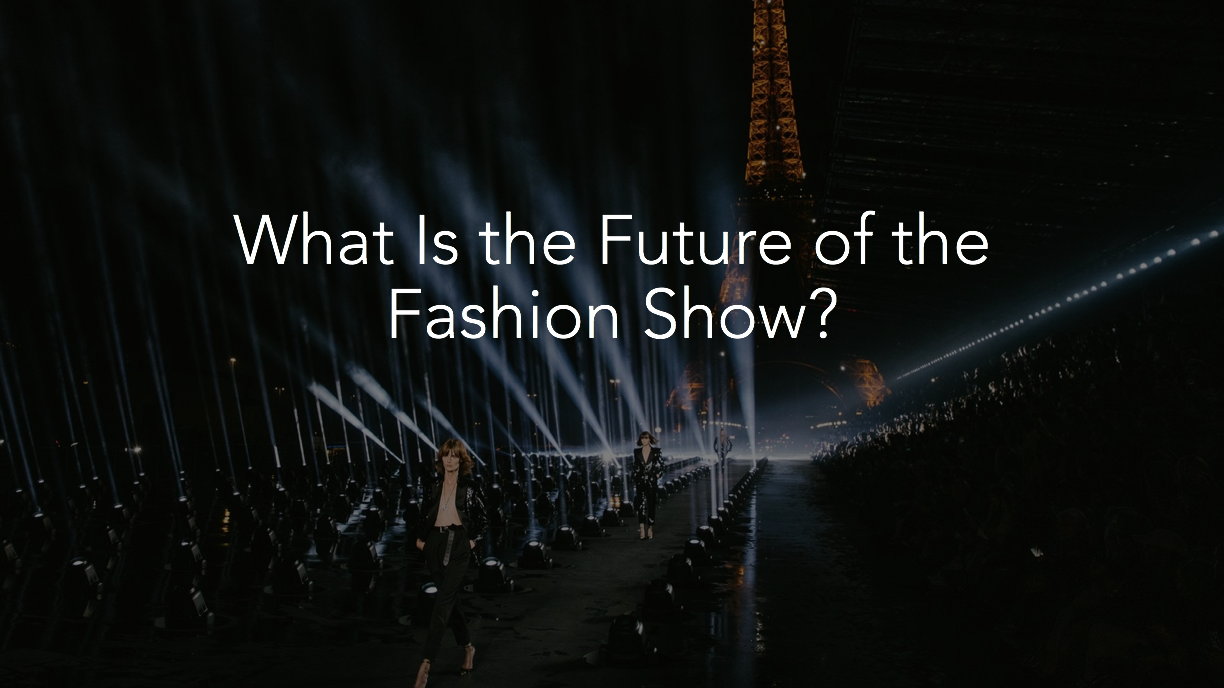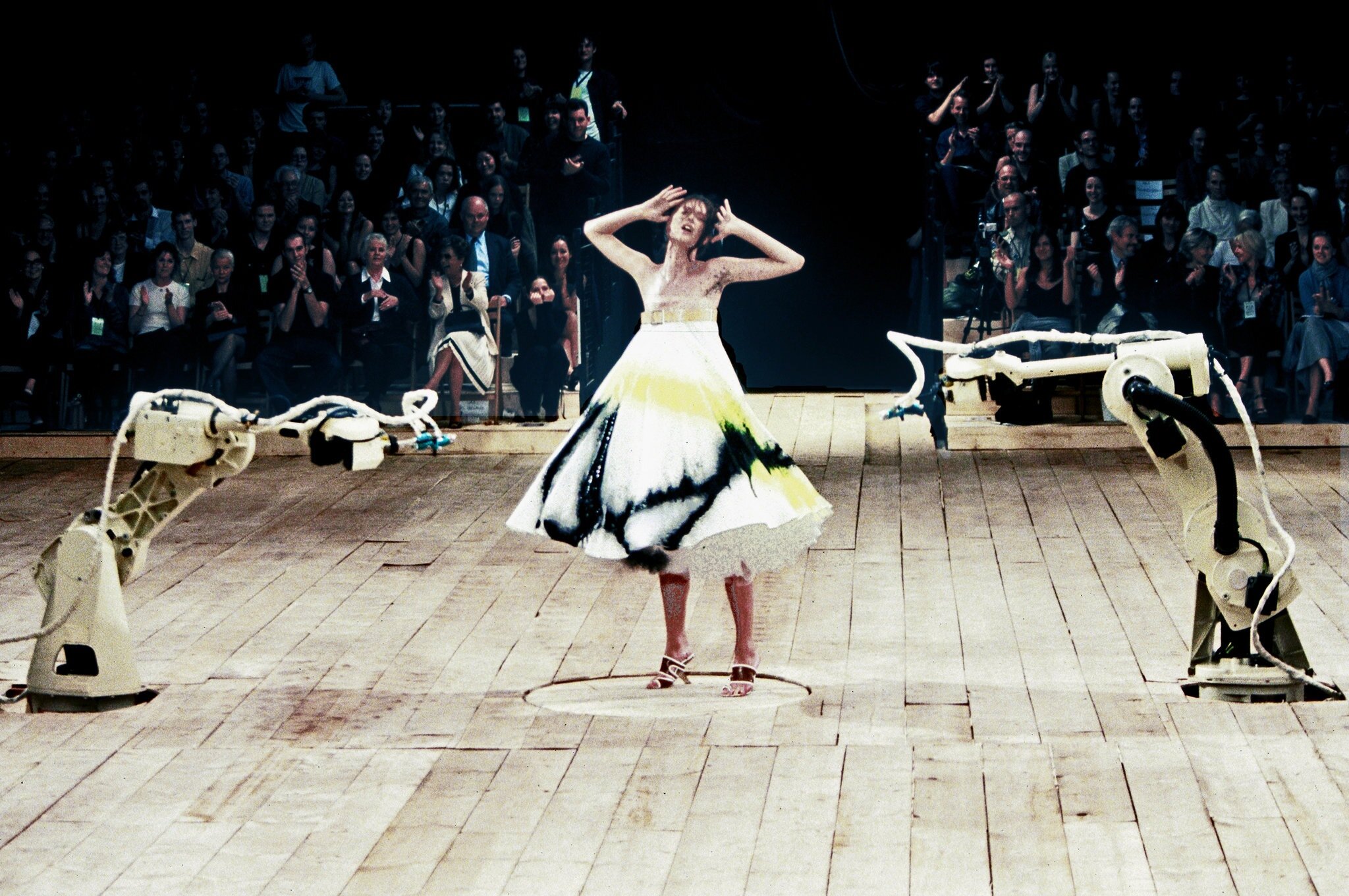So, what would a year of NO Fashion Shows mean for the industry?
Creativity is still the beating heart of the fashion system. And each season it starts with the shows. They are the primary medium through which designers crystalize and convey their creative visions, which then inform the products that fill stores and the advertising campaigns that support them, as well as other creative content, from window displays to the editorial shoots that appear in glossy magazines.
Using a fashion show as a marketing and communication tool isn’t some nefarious scheme. Look back to the most spectacular fashion shows of the past and you’ll see that those with the most lasting impact are often the ones in service of a greater message.
That can be a social message, an aesthetic message, or a cultural message, but rarely is
“Let’s sell some bags!” enough to carry a brand from year to year.
How might brands plan for this eventuality? For a start, should they look to Asia.
As the coronavirus takes its toll on the global economy, businesses of all sizes, sectors and markets face an uncertain future. The fashion and retail industries in particular need to steer through changing consumer sentiment, shuttered stores and disruption to the usual cadences of seasonality.
2020 may be the year without any more physical fashion shows, with many designers already opting to live stream or host digital events instead. As June approaches, even more brands will have to follow suit or risk losing touch with buyers and consumers altogether since the upcoming men’s runways in London, Milan and Paris, as well as July’s Haute Couture shows, have also been called off.
So, what do brands need to know before going virtual?
Fashion, a business predicated on how we present ourselves to the world, is now grappling with how we imagine ourselves in the new digital reality. The industry has had to embrace this digital consciousness quickly, crafting sights and scenes explicitly devised to tap into our desire to snap, post, share, go viral.
But the question is, do we need a physical live audience?
A new generation of designers are working to conquer this psyche, none more masterfully than Demna Gvasalia, the creative genius behind the fashion collections at Balenciaga.
For the recent spring-summer 2019 Balenciaga show in Paris, Gvasalia approached Jon Rafman, a digital artist whose immersive work has referenced video games, virtual realities, and Google’s Street View mapping project.
Presenting the collection inside a cylindrical, LED screen-paneled tunnel, viewers confronted a Blue Screen of Death that slowly dissolved into digitally-rendered liquids.
The visually startling journey continued to reveal alien landscapes, calamitous ecosystems, and techno-fetishistic civilizations on the brink of collapse.
As Gvasalia stated, “Fashion shows are for transporting people, otherwise there’s no point. It was like working on a movie, getting people into another reality, so it stays as a memory.”
Social Media Is the Future, But It Can’t Be the Whole Story…
As fashion Industry has paused to ponder it’s future, a digital first strategy will be crucial, but can it replace the IRL experience. “It needs to be edited and designed to fit well on a screen that fits in the palm of your hand that is available to the audience: the iPhone video and Instagram,”. The purpose of the shows, is to help luxury brands communicate and to continue to make the audience dream. What that means [for the future] is that we need to continue to make people dream in a more efficient, shorter way, and in a way that the POV of the audience matters more than the one from the traditional media.
Virgil Abloh’s Menswear Collection for Louis Vuitton, drew heavily on the legacy of Michael Jackson. Invitations were sent out in the form of white rhinestone-embellished gloves, the set was designed to evoke Jackson’s ‘Billie Jean’ music video and models walked the runway in a variety of Jackson-inspired looks.
But could this have been produced in a Studio / Music Video Format and streamed direct to the LV audience? Do we need to start considering alternative experiences…
Community Matters More than Ever
Simon Porte / Jacquemus’s Spring 2020 show the designer staged a sun-kissed show in the lavender fields of Provence, France. It was the least traditional show: off-site, off-calendar, off-audience & “Off-Everything,” because the audience was only about 10 or 20% professional.
“It was very, very small compared to other shows, but it had to do more. It proved that with a smaller audience you can still create a gigantic buzz.”
Why then do we need to have the entire Fashion Circus travel over four major cities up-to 4 times a year…?
Fashion Must Be Sustainable or Risk Losing Its Relevance
Sustainability isn’t a choice anymore; it’s essential. But maybe fashion is too late to the game.
“The only no-impact fashion show is the one that we don’t do!”
After Christian Dior’s spring 2020 womenswear show, the trees that lined the catwalk were replanted in parks around France










